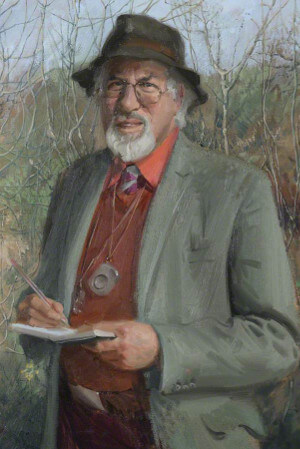Oliver Rackham
Rackham warns against the dangers of the factoid, and defines the factoid as something which ‘looks like a fact, is respected as a fact and has all the properties of a fact, except that it is not true"

Born in Bungay, Suffolk, in 1939, Oliver Rackham was educated at Norwich School, matriculated at Corpus Christi College in 1957, and was elected Fellow of the college in 1964. Although he began by studying physics, as a graduate student he turned his attention to botany, particularly the physiology of plant growth and transpiration. This became the subject of his thesis. After completing this, he began a project to investigate the effect of drought in barley crops in association with the Plant Breeding Institute in Cambridge, but this work remained unpublished. From 1972 onwards he concentrated on historical ecology, especially the history of woodland and the landscape in England and Wales. He wrote prolifically on this, both in specialist journals, as well as for the general reader, and through a series of important books.
Amongst the many books Rackham published in a long and productive career were: 'Hayley Wood, its History and Ecology' (1975), 'Trees and Woodland in the British Landscape' (1976, revised edn 1990) and 'The Last Forest: the story of Hatfield Forest' (1989). His 'History of the Countryside' (1986) won the Angel Literary Award of the Year. His interests extended to the United States and mainland Europe, Greece in particular, about which he wrote in ‘The Making of the Cretan Landscape’ (1996), co-authored with American academic Jennifer Moody. Research trips were also made to other parts of the world including Japan and Australia. One of Corpus’ s longest-serving Fellows, Rackham became an expert on the college’s history, traditions and architecture. As Keeper of the College Plate, he authored 'Treasures of Silver at Corpus Christi College, Cambridge' (2002), a detailed descriptive catalogue. He was elected Master in 2007, serving in that office for one year.
Although college duties claimed a large proportion of his time, the work of observing the landscape, and writing about his findings, remained a continuing and central preoccupation throughout his life. The red notebooks in which he recorded his observations, and which form an unbroken series from his youth to his death, reflect that. These often contain sketches of plants and fungi. He also kept a parallel series of blue, location-specific notebooks (in the same format as the red) which tend to contain more structured data in the form of tally charts showing incidence of plant species, as well as little maps. When conducting fieldwork, Rackham would also take photographs to preserve a ‘snapshot’ of the particular location at a specific moment in time. These complement the written record kept in the notebooks, and the archive of his slides and prints is also kept at Corpus Christi College. Another kind of record kept by Rackham which is archived at the college is the collection of woodland record cards. These give details of the plant and tree species found in a particular area of woodland, and remain of especial value to ecologists and conservationists working in the field. In addition, Rackham created a herbarium, collecting plant samples from all around the world. This is now kept at Cambridge University’s Botanic Garden, where it is being catalogued.
One of the distinctive features of Rackham’s work was its interdisciplinary nature, and particularly the way it related scientific observation to historic and cultural context, revealing the nature of man’s interaction with his surroundings. The ability to work with medieval manuscripts assisted him in this, and his antiquarian knowledge was far-reaching. The Rackham archive at Corpus Christi College includes the historico-geographic notes which he kept in large filing cabinets in his study at home, and also some of his correspondence with scholars and lay readers of his work who consulted him on a range of topics. A body of personal correspondence likely to be of interest to potential biographers is also preserved. Professor Rackham passed away in February 2015 and was interred, at his request, in the college crypt.
The red notebooks form a chronological sequence, and were kept continuously by Rackham from his youth right up until his death. They record observations on plants seen on his travels as well as in his home surroundings, as well as other kinds of information, for example about weather and college duties. They are paginated continuously and include some sketches. A label on the outside usually lists the locations covered in each notebook, with page numbering, thus serving as a kind of contents page. The blue notebooks are more location-specific than the red ones. They are divided into separate sub-groups according to location, with an abbreviated key on the spine. Within each sub-group (for example the Hayley Wood books) pagination is continuous from notebook to notebook. They tend to contain more raw data than the red notebooks, for example tally charts showing frequency of particular plant species in particular areas of woodland, with photocopied maps of woodland areas often pasted in. Although sequence is roughly chronological, information is entered in a more content-led fashion than in the red notebooks.
A number of the notebooks have been transcribed as part of an ongoing crowdsourcing project. More details, including how to get involved, are available on the project homepage and you can read more about the project in this news story .


